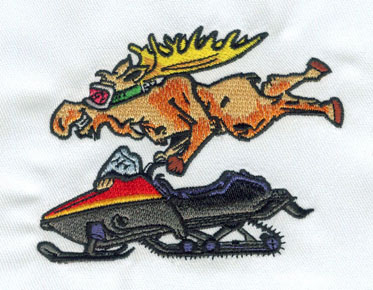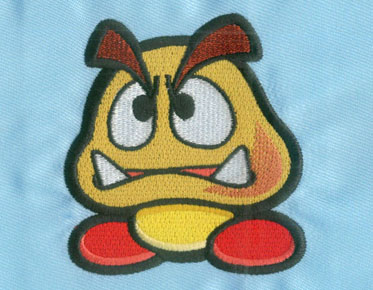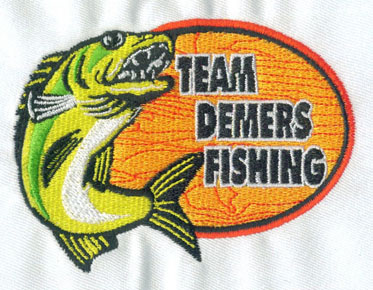Exploring File Formats Compatible with Embroidery Digitizing
Embroidery digitizing is a popular technique
used to convert artwork or designs into stitch patterns that can be embroidered
onto fabrics. However, to successfully execute this process, it is crucial to
understand the file formats that are compatible with embroidery digitizing. In
this article, Eagle Digitizing will bring
us to explore the various file formats and their compatibility, providing
insights into embroidery digitizing services in the USA and the process of
embroidery digitization.
I. Understanding File Formats for Embroidery Digitizing
Embroidery-specific File Formats:
Embroidery-specific file formats are designed
specifically for embroidery machines and contain stitch and color information.
These formats ensure accurate reproduction of designs. Several widely used
embroidery-specific file formats are:
a. DST (Data Stitch Tajima):
DST files are the most popular format for embroidery digitizing. They contain stitch instructions, stitch types, and color information. DST files are compatible with most embroidery machines and offer flexibility in adjusting stitch density and length.
b. PES (Brother Embroidery Format):
PES files are primarily used for Brother
embroidery machines, although they can be read by other machines as well. They
store data about thread colors, stitch types, and other embroidery-specific
details. PES files allow for color changes during embroidery, providing options
for multi-colored designs.
c. EXP (Melco Expanded):
EXP files are commonly used for Melco
embroidery machines. They contain information about stitches, colors, and other
design elements, allowing for accurate embroidery reproduction.
d. XXX (Compucon/Singer):
XXX files are compatible with various embroidery machines, including those
manufactured by Compucon and Singer. They store stitch data, color information,
and other embroidery-specific details.
e. VIP (Pfaff):
VIP files are specific to Pfaff embroidery
machines. They store design information, including stitches, colors, and other
parameters, ensuring precise reproduction on Pfaff embroidery machines.
f. HUS (Husqvarna Viking):
HUS files are primarily used for Husqvarna
Viking embroidery machines. They contain stitch data, color information, and
other details necessary for accurate embroidery production.
II. Embroidery Digitizing Services in the USA
Embroidery digitizing services in the USA offer professional expertise and state-of-the-art technology to convert designs into embroidered artwork. These services provide assistance in file preparation, digitization, and ensure the final product meets the desired specifications. By leveraging their knowledge, experience, and advanced software, embroidery digitizing services in the USA deliver high-quality results, enhancing the visual appeal of various products.
III. The Process of Embroidery Digitization
Embroidery digitization involves several steps
to transform a design into a stitch pattern. These steps typically include:
1. Design Preparation:
Cleaning up the design, adjusting colors, and
separating different elements to ensure clarity and ease of digitization.
2. Digitizing Software:
Utilizing specialized embroidery digitizing software to manually or automatically convert
the design into stitches, specifying stitch types, density, and other parameters.
3. Testing and Refinement:
Stitching out a sample to review the design's
appearance and make necessary adjustments for optimal results.
4. File Conversion:
Exporting the digitized design into the
appropriate embroidery file format, such as DST or PES, ensuring compatibility
with embroidery machines.
5. Production:
Transferring the digitized file to an embroidery machine for the actual stitching process, where the design comes to life on the chosen fabric.
Frequently Asked Questions:
Q1: Are there any other embroidery file
formats apart from DST and PES?
A1: Yes, there are various embroidery file formats,
including EXP, XXX, JEF, and more. However, DST and PES are the most commonly
used formats.
Q2: Can I digitize a hand-drawn design for
embroidery?
A2: Yes, hand-drawn designs can be digitized
for embroidery. The design needs to be converted into a digital format, such as
a high-resolution scan or a vector file, before proceeding with digitization.
Q3: Are there any limitations to the
complexity of designs for embroidery digitizing?
A3: While embroidery machines can handle
intricate designs, extremely complex designs may require adjustments to ensure
optimal stitch quality and fabric compatibility.
When it comes to embroidery digitizing,
choosing the right file format is crucial for successful design reproduction.
By understanding the compatibility of these file formats, embroiderers can
optimize their embroidery digitization process and achieve exceptional results.



